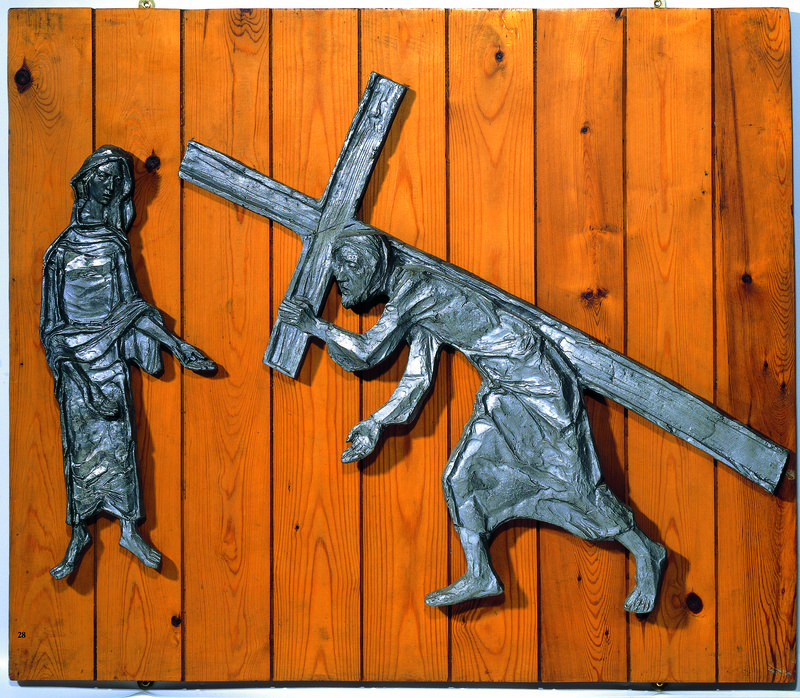
Frank Roper (1914-2000)
Aluminium (lost wax casting)
76 x 89 cm
1963
Methodist Modern Art Collection
No. ROP/1963/1
Image Copyright © Trustees for Methodist Church Purposes. The Methodist Church Registered Charity no. 1132208
Biblical commentary
One of four reliefs from a set of Stations of the Cross.
The Stations of the Cross (or the ‘Way of the Cross’ or ‘Via Dolorosa’) are the places where Jesus is believed to have halted on his way from Pilate’s House to his crucifixion. In the late Middle Ages, the devotion of the ‘Way of the Cross’ was introduced - a series of stopping places for meditation or homilies, each marked by a different image.